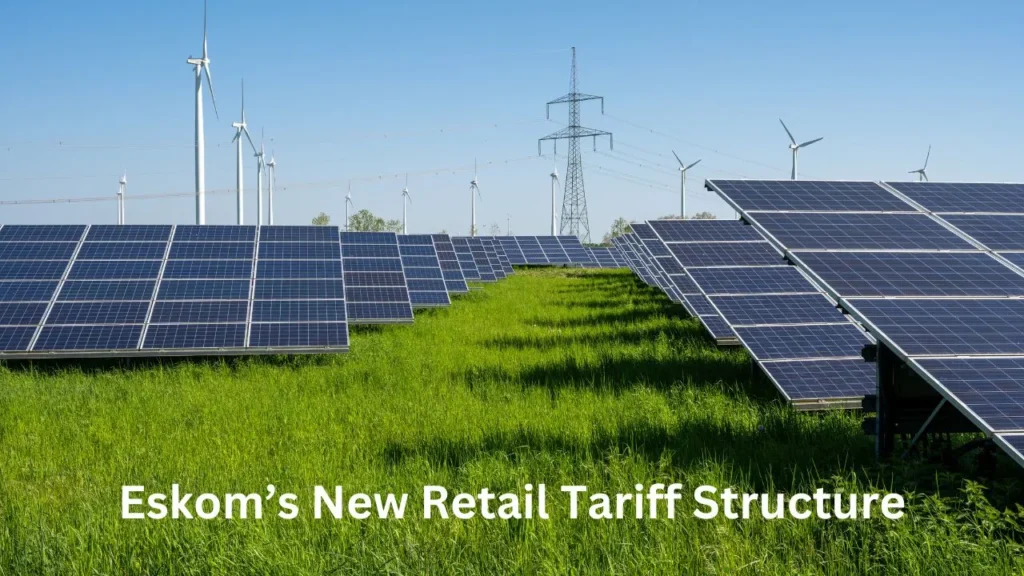Eskom, South Africa’s primary electricity supplier, has announced plans to revise its retail tariff structure, introducing significant changes for residential Solar Panel customers connected to the grid. These adjustments aim to balance Eskom’s financial stability while addressing the rising electricity demand in the country. However, the proposed changes are likely to have a profound impact on households relying on solar energy.

Understanding Eskom’s New Tariff Structure
The proposed tariff adjustments will modify how residential solar users are charged for both electricity consumption and the energy they supply back to the grid. Historically, solar households benefited from the Net Metering System, which allowed them to sell excess energy to Eskom, offsetting their electricity costs. The new structure, however, threatens to disrupt this arrangement, potentially increasing costs for grid-connected solar users.
How Will the New Tariffs Affect Solar Customers?
For many residential solar users, these changes represent a significant setback. Here’s what the new structure means:
1. Increased Costs
Homeowners who use both solar power and Eskom’s grid may face higher electricity bills. The reduced financial incentives for feeding excess energy into the grid could make solar energy less appealing.
2. Discouragement of New Solar Installations
The diminished economic benefits of grid-connected solar systems might discourage prospective solar adopters, slowing the country’s transition to renewable energy.
3. Push Towards Energy Independence
With rising grid costs, many solar users may consider operating their systems independently. This could involve investing in battery storage to store surplus solar energy, enabling them to reduce reliance on the national grid.
Implications for South Africa’s Energy Landscape
Eskom’s proposal is part of broader efforts to restructure the energy sector amidst challenges like load shedding and growing electricity demand. While financial sustainability is essential for Eskom, the new tariffs could undermine the adoption of solar energy, an important component of South Africa’s renewable energy goals.
1. Financial Stability vs. Renewable Energy Adoption
Eskom’s focus on financial recovery could inadvertently hinder the growth of renewable energy solutions. Solar energy has been a key strategy for alleviating pressure on the national grid, and disincentivizing solar adoption could have long-term repercussions.
2. Increased Energy Independence Among Consumers
As grid costs rise, more households may shift towards complete energy independence, potentially reducing Eskom’s customer base. This shift could also encourage innovation in off-grid energy solutions.
What Can Solar Customers Do?
With these changes on the horizon, residential solar customers should proactively explore ways to adapt. Here are some recommendations:
1. Invest in Battery Storage
Battery storage systems allow households to store excess solar energy for later use, reducing dependence on the grid. Although the initial investment is high, it can lead to long-term savings.
2. Evaluate Alternative Energy Solutions
Customers can explore hybrid systems that combine solar panels with other renewable energy sources, such as wind turbines, to maximize energy production.
3. Stay Informed
Monitoring Eskom’s updates on tariff changes is crucial. Follow their official website and social media platforms for the latest information and insights.
Conclusion
Eskom’s proposed retail tariff changes for 2024 present challenges for residential Solar Panel customers. While the adjustments aim to support Eskom’s financial sustainability, they could deter solar adoption and push many towards energy independence. Solar Panel users must stay informed, evaluate their options, and consider alternative solutions to navigate this evolving landscape effectively.
FAQs
1. What is the new tariff structure proposed by Eskom?
The new tariff structure will adjust how residential solar users are charged for electricity consumption and for feeding excess energy into the grid. This change may increase costs for grid-connected solar users.
2. How will this impact solar energy users?
Solar users may face higher electricity bills and reduced financial incentives for selling excess energy back to Eskom. This could make solar energy less economically attractive.
3. Should I invest in a battery storage system?
Yes, investing in a battery storage system can help you store excess solar energy and reduce reliance on Eskom’s grid, providing long-term financial and energy security benefits.
4. How can I stay updated on Eskom’s tariff changes?
Follow Eskom’s official channels, including their website and social media platforms, to receive real-time updates and insights into the proposed changes.
5. Will these changes affect the adoption of solar energy in South Africa?
Yes, the proposed changes could discourage new solar installations and slow the country’s transition to renewable energy solutions.
